In Summer 2023, Doan Brook Watershed Partnership (DBWP) partnered with Chagrin River Watershed Partners, Inc. (CRWP) and Cleveland Public Library to install a rain garden at the Cleveland Public Library – Rice Branch through the Master Rain Gardener (MRG) program. This project received funding from the Shaker Lakes Garden Club, which we used to purchase the various plants and supplies needed to plan and install the rain garden.
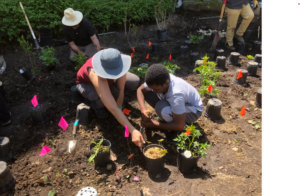
The MRG program is administered through a partnership between CRWP, Cuyahoga Soil and Water Conservation District, and Lake County Soil and Water Conservation District that consists of a 5-week course that trains residents and professionals to design, install, and maintain rain gardens. As a part of the program, public rain gardens are installed throughout the region by students and volunteers with the guidance of instructors during public rain garden field days. During a field day, the participants design and install a rain garden on site from start to finish in one day. Instructors plan the technical and logistical aspects of the rain garden ahead of time, including furnishing plant choices and working with the sites on rain garden design aspects. Participation in this project is an environmentally beneficial step that Cleveland Public Library wants to take to reduce stormwater, improve water quality, and mitigate flooding.
During the COVID pandemic, the existing rain garden at Rice Library suffered from a lack of maintenance during the pandemic closures. It was an important location due to both the social and ecological benefits for the area. The rain garden collects rainwater from impervious surfaces such as the roof and parking lot, helping to slow runoff to prevent flooding while improving water quality by reducing the amount of pollutants running into Doan Brook and Lake Erie. Libraries play an important role in communities, especially in the urban landscape for an area that is fighting poverty, with 36.7% of the population living below the poverty line. Rain gardens can provide important benefits as a natural space both for human enjoyment and as a natural oasis for passing pollinators and other wildlife. It provides health benefits such as cleaner air, maintaining temperatures in heat waves, and improving access to green space. The rain garden is visible to those using the library and the adjacent parking lot and school, Harvey Rice Wraparound School.
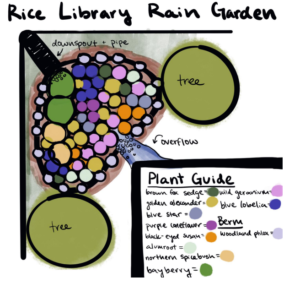
Guide to the plants in the Rain Garden at Rice Branch of Cleveland Library
The goal of this project was to restore the rain garden to contribute to a more sustainable stormwater management system that meets the goals set by the Stormwater Management Program in 2016 by Northeast Ohio Regional Sewer District (NEORSD). The existing rain garden location at the library is fed by a downspout from the roof, and is an ideal spot for filtering and collecting runoff from the roof. During our rain garden planting event, volunteers added many plants at the Rice Library Rain Garden include 6 brown fox sedge, 12 golden alexander, 5 blue star, 10 purple coneflower, 10 black-eyed susan, blue-eyed grass, 2 northern spicebush, 2 bayberry, 7 woodland phlox, 17 wild geranium, 12 alumroot, and 15 blue lobelia.
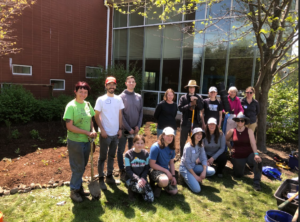
What is a rain garden?
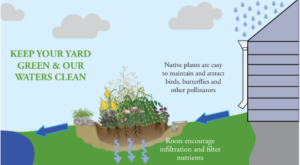
From Cuyahoga Soil and Water Conservation District
A rain garden is a small depression that collects water that runs off from a nearby building or street, often fed by a downspout. The collection of runoff rainwater prevents the pollutants in the water from entering natural bodies of water, such as Doan Brook and Lake Erie. In addition, it reduces the risk of flooding or overflowing storm drains and sewers. The garden is filled with native flowering plants, grasses, ferns, and shrubs, which act as a natural filter for pollutants and help the water soak into the soil naturally. This also provides a natural habitat for important native pollinators such as bees, birds, and butterflies. By planting a variety of flowers, shrubs, and grasses, the rain garden will provide habitat and beauty year round!
Installing your Own Rain Garden
Rain gardens can be as big or small as you like, and are super easy to install! They should be approximately 10 feet away from the water source, which is typically a downspout from a roof but can also be a rain barrel. They should be planted at a higher elevation point in the yard for maximum water collection and incorporation into the soil. Rain gardens are low maintenance too, as the native plants are adapted to the local weather. Additionally, you can apply for credit to use towards building your rain garden by applying through the Northeast Ohio Regional Sewer District.
To learn more about rain gardens and how to make one for your house, visit:
- Cuyahoga Soil and Water Conservation
- NEO Master Rain Garden
- Northeast Ohio Regional Sewer District

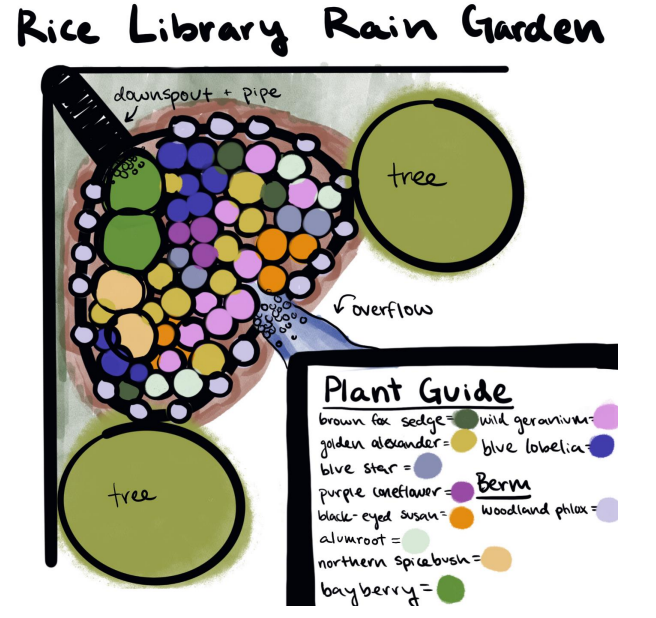
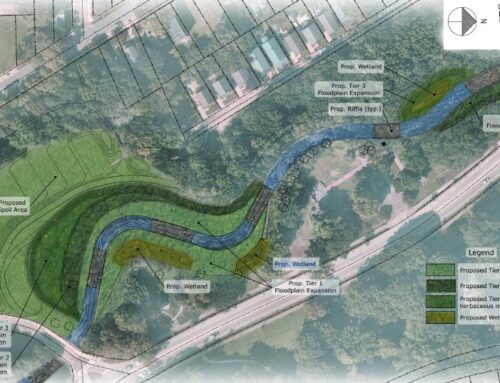
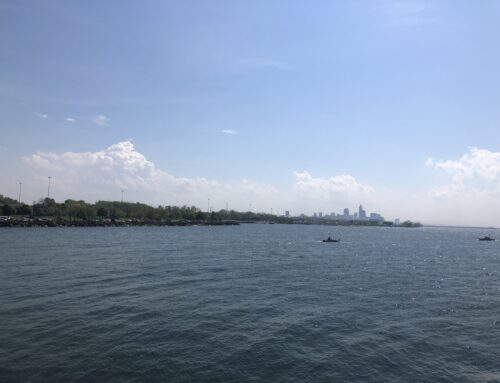
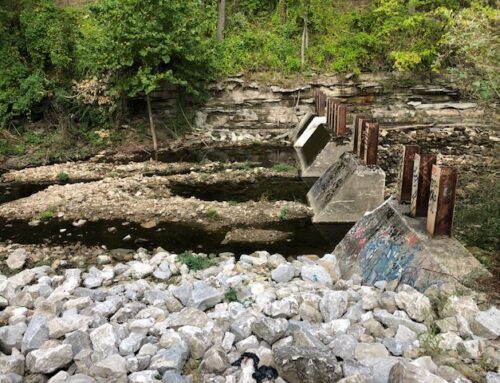

Leave A Comment